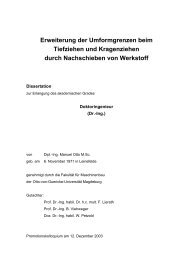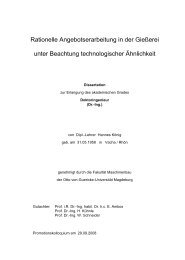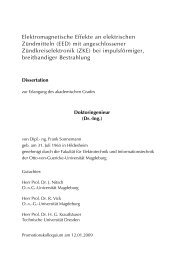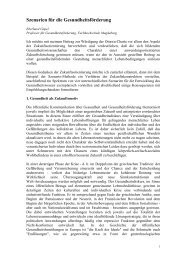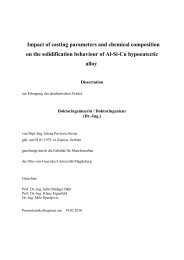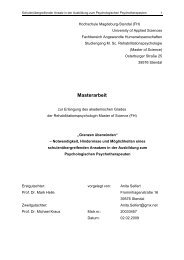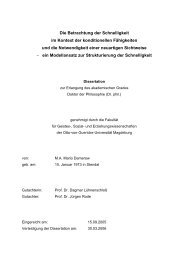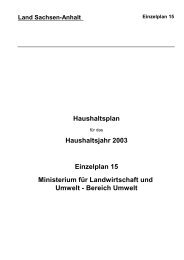Chapter 1
Chapter 1
Chapter 1
You also want an ePaper? Increase the reach of your titles
YUMPU automatically turns print PDFs into web optimized ePapers that Google loves.
in conformity with internationally accepted definitions and European standards to Tunisian firms, but many more pripractices,<br />
and (5) severance packages and unemployment vate laboratories need to be set up. The government of<br />
insurance policies. Slovenia, also concerned that its small enterprises must<br />
adapt to the more dynamic and competitive environment<br />
Policies to promote innovation and quality: resulting from its integration with the EU, is trying to<br />
"la mise d niveau" encourage this upgrading with minimal government involvement<br />
(box 3.3).<br />
The most important way Tunisia can innovate and improve Tunisia's more recent efforts to liberalize investment prothe<br />
quality of its products and services is through global cedures and open more activities to the domestic and forlinkages,<br />
mainly between private parties, rather than gov- eign private sectors should help promote a wider range of<br />
ernments. 7 Stronger competition from trade liberalization contacts between Tunisians and foreign entrepreneurs. The<br />
will promote higher productivity and encourage a stronger benefits of government creating a policy environment that<br />
outward orientation. The process of achieving international promotes competition, foreign contacts, efficient infracompetitiveness<br />
is an effect of trade liberalization and not a structural support and human resources to adopt new techprerequisite<br />
for it. Tunisia, like other industrializing coun- nologies are well-documented. There is less understanding<br />
tries, uses four main channels to obtain new technology: of what are the best means to help local enterprises respond<br />
* Imports of capital goods and components that embody a to these incentives.<br />
significant amount of technology that is often accompanied Research in several African countries on the impact of<br />
by foreign technical assistance to set up and operate the structural adjustment measures on the performance and<br />
equipment;<br />
* Foreign technology licensing, where companies buy the<br />
enhanced competitiveness of small enterprises shows<br />
design specification and technical assistance on how to use BOX 3.3<br />
the technology. The use of this channel is growing as tech- Upgrading the competitiveness of small and<br />
nology gets more complicated and other methods of obtain- medium-size enterpises: The case of Slovenia<br />
ing it (such as FDI) become more difficult; The Slovene program supports the improved competitveness of<br />
* Foreign direct investment, which transfers capital, tech- small and medium-size enterprises (defined according to assets,<br />
nology, management, access to global networks of information,<br />
and access to markets; and<br />
turnover, and number of employees) and includes two main<br />
components: diagnostic evauations (paid for mostly by govem-<br />
ment and a small fee from the companies) and the formation of<br />
* Foreign education and training of students who become an equity fund to help recapitalize the enterprises (made up of<br />
part of an overseas network that can be a valuable source of capital from EBRD, IFC, Harvard Business School Alumni<br />
information to their home countries. Organization, two local banks, and USAJD). The most important<br />
While government and state-owned agencies may not be feature of Slovenia's competitiveness program is the trade liberthe<br />
best providers of technical assistance to enterprises, alization agreement with the EU, which provides the driving<br />
t s v o h ar force , of the upgrading process, as virtually all import barriers will<br />
goverunment can create the appropriate environment and be removed over the next five years. The role of govemment is<br />
provide practical support to private entrepreneurs. limited to well-defined development objectives targeted at small<br />
Examples include state-funded grants to promote the estab- enterprises, such as (I) introducing smaller firms to modern<br />
lishment of private productivity centers (possibly in a joint financial, marketing, and management systems by helping to pay<br />
venture with a foreign firm) and partial grants to help smal for an initial 'diagnostic' evaluation that smaller companies would<br />
firms finance the cost of hiring interational experts, otherwise not be able to afford and (2) promoting the transfer of<br />
technology by requiring the foreign consultants to transmit their<br />
grams with donor governments (GTZ of Germany) is showstate<br />
of the art analytical methods to local consulting firms. It will<br />
be up to the firms' owners to decide if they want to go to the<br />
ing beneficial results. Passing laws on standards and market for additional capital or loans, and for the private investmetrology<br />
(but using private laboratories for quality certifi- ment funds and banks to decide independently whether to lend<br />
cation) provides enterprises with a credible means to docu- to or invest in a company.<br />
ment quality performance. Tunisia's standards and patents sotce: Sblenia, discssio,6 wih USAID onirac.<br />
agency, INNORPI, has been very useful in applying<br />
STRENGTHENING MARKET FORCES 37



